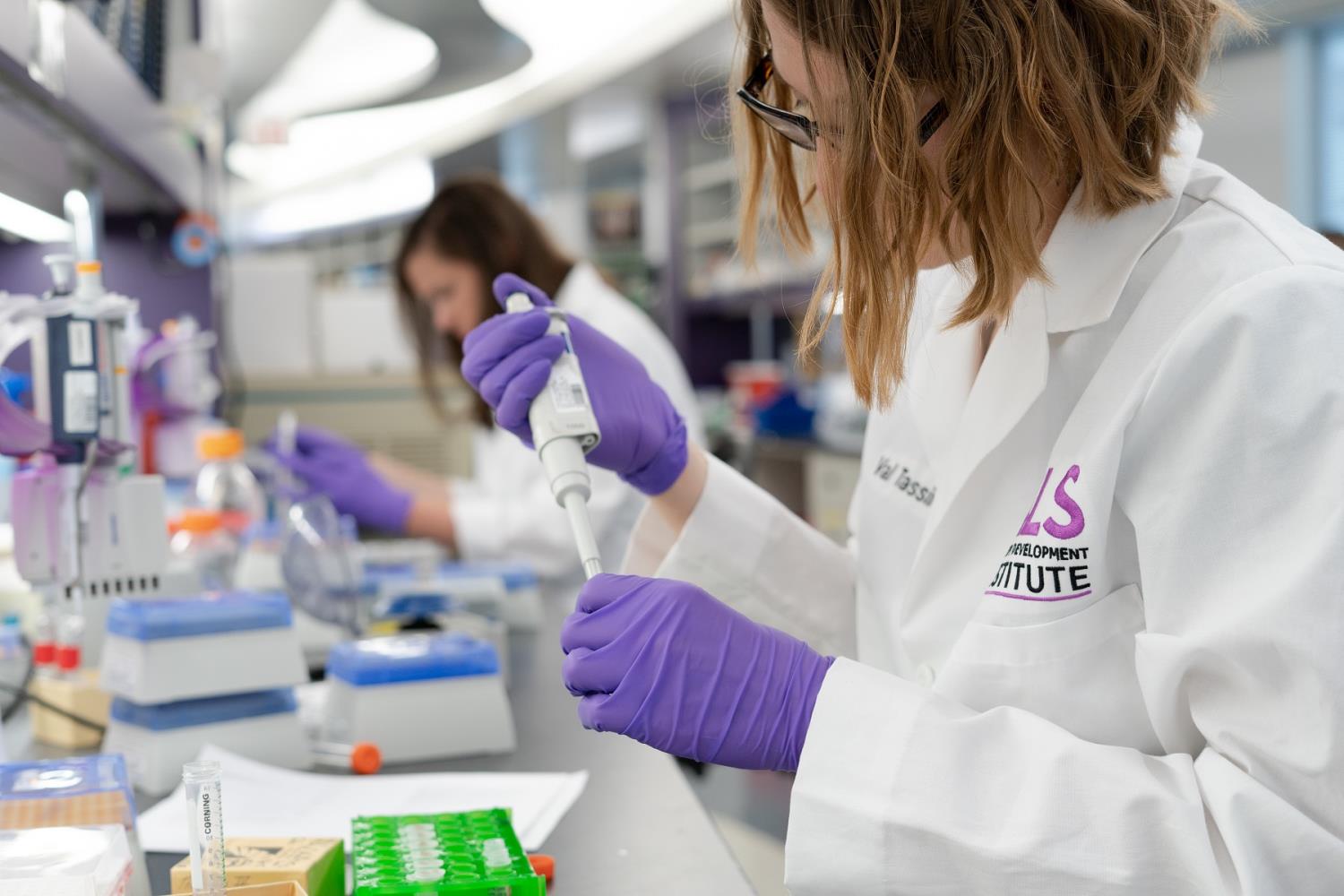
Much of the drug development work that goes on here at the ALS Therapy Development Institute (ALS TDI) relies on thorough research in the SOD1G93A mouse model, the mouse model most commonly used in ALS preclinical research. In order to understand which potential ALS treatments hold promise, our scientists rigorously test drug candidates in mice that display symptoms of ALS. But if researchers are not careful in meticulously standardizing and interpreting data from these mouse models, the quality of ALS research can suffer.
In a paper recently published in Bio-protocol, ALS TDI scientists Valerie Tassinari and Dr. Fernando Vieira tackle this problem by detailing a procedure to standardize one aspect of how ALS TDI uses the SOD1G93A mouse model.
The SOD1G93A Mouse Model
A transgene is a gene that has been deliberately added to an organism, in this case mice, so that a specific genetic condition can be studied. SOD1G93A mice are genetically modified and given multiple copies of the human mutant transgene, SOD1(G93A), which is known to be associated with familial ALS. These mice show ALS symptoms and have a shorter-than-normal lifespan. By tracking changes in the progression of symptoms and lifespan of the mice, researchers are able determine which drugs are most effective in fighting ALS.
SOD1G93A mice are bred to have 24 copies of the SOD1(G93A) transgene. They progress quickly through symptoms and have an average lifespan of 129 days. This is the “control” to which we compare our drug tests. If symptoms in drug-treated mice progress more slowly or the lifespan increases by any statistically significant margin from the “control” untreated mice, then we look more seriously at the drug as a potential ALS treatment.
However, over time and over generations of breeding, the number of SOD1(G93A) transgene copies in the mouse colony can vary. Mice might be born with more or fewer copies of the transgene, and this inversely affects the lifespan of the mice. This means that mice born with 34 copies of the transgene will live an even shorter lifespan averaging 99 days, whereas mice with 20 copies will live on for 150 days.
Standardizing Procedures
Genotyping is the process that allows us to detect the presence or absence of DNA sequences in the mice that we study. Prior to the publishing of this paper, there has been no detailed technique to genotype mouse models, no standardized method to determine which mice have more or fewer SOD1(G93A) transgene copies. Though this may seem trivial, it can have far-reaching effects. When mice with varying transgene copy numbers slip into preclinical animal trials, it becomes difficult to determine whether an observed increase in lifespan is the result of an effective drug trial or simply the result of testing on a low-copy, long-living mouse.
In an effort to address this, Tassinari and Vieira lay out a step-by-step procedure to genotype SOD1G93A mice (in other words, determine their transgene copy number). They describe the materials, chemicals, equipment, software, and data analysis tools used in the tests at ALS TDI in detail. They recommend that mice with fewer than 16 copies of the SOD1(G93A) transgene should be barred from inclusion in drug studies in order to avoid false positive results on drug efficacy.
Impacting ALS Research
By publishing this protocol, ALS TDI is able to contribute to the wider quality of research in the ALS drug development world. Removing low-copy mice from tests minimizes error and promotes better interpretability of drug efficacy data. Furthermore, ensuring quality of the mouse model in the preclinical stage allows time and resources in the clinical trial stage to be spent on only the most promising drugs.
Tassinari and Vieira’s detailed procedure allows the focus of ALS research to remain solely on determining the efficacy of potential therapeutics without being sidetracked by copy number differences in SOD1 mouse models, unstandardized testing procedures, or faulty data.
References:
Tassinari, V. R. and Vieira, F. G. (2019). A High-throughput qPCR-based Method to Genotype the SOD1G93A Mouse Model for Relative Copy Number. Bio-protocol 9(12): e3276. DOI: 10.21769/BioProtoc.3276.